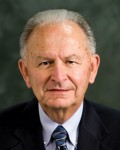 AOPA Great Lakes Regional Report –
AOPA Great Lakes Regional Report –
by Bill Blake
An individual who lost a significant advanced payment for flight training at a now defunct California flight school has started a movement to increase and enforce stringent laws in all states to protect students from future losses. While his goal may be laudable, he appears to have no concern for collateral damage that may be caused to flight training by overly burdensome regulations. AOPA has been working to revise the law already passed in California. It is believed that meetings to introduce similar laws in Arizona and Florida are underway. If you learn of proposals in your state, please contact AOPA.
You may remember in my earlier columns, I have talked about bills in Michigan to change and raise the state aviation fuel tax. The last proposed bill would change the current tax from three cents ($.03) per gallon to a phased-in percentage tax ultimately reaching four percent (4%) of the wholesale price of aviation fuel. AOPA has adamantly been opposing any fuel tax based on a percentage of the fuel price. Informal discussions have indicated that the bill will be amended to an increase based on cents per gallon. However, no amendment has been made, nor any indication of how many cents per gallon the increase would be.
Another Michigan bill (HB 6377) affecting aviation has been introduced recently, which would allow municipalities to temporarily close their airports to allow vehicle racing on the airports. We believe closing of airports that have received federal improvement grant money requires FAA approval. We will be educating legislators on FAA requirements. In the meantime, please let your elected officials know your views on such legislation and how it will impact your flying.
Two Minnesota bills died with the close of the last session. The first was an increase in the state fuel tax and a decrease in the state aircraft registration fee. AOPA believed that the bill was bad because the net result of the changes would have been less money being available to preserve and improve the state’s airport infrastructure. We believed that would leave the aviation community open to a future larger increase in the state aviation fuel tax to make up the revenue shortfall. I mention this dead bill because I know there have been discussions over the summer to introduce a new fuel tax increase bill and I wanted to remind you of the history to help you form your own opinions going forward. The second bill, which was introduced at the end of the session, was one that would have reduced the sales tax on aircraft purchases, and dedicated the aviation sales tax collected to aviation purposes. AOPA supports that type of bill. Such a bill would be beneficial to aviation and to the economy as a whole.
Speaking of the economic impact of aviation, consider the remarks made by Wisconsin Governor Jim Doyle when he proclaimed “Aviation Week in Wisconsin” this summer coinciding with the week of EAA AirVenture in Oshkosh, Wisconsin. He stated that there were 132 public airports and 148 heliports in the state. The proclamation went on to recite that aviation in Wisconsin generates $3 billion in economic activity, supports 41,000 jobs, and provides $1 billion in personal income to Wisconsin residents each year, while improving the quality of life of its citizens through the efficient transport of passengers and goods, providing emergency medical transportation, and enhancing public safety by assisting in law enforcement.
By the way, AOPA held its annual Airport Support Network breakfast at AirVenture for all of our volunteers in attendance at the show. Approximately 100 people heard AOPA President Craig Fuller speak about national issues and his view on the future of general aviation. Craig responded to numerous questions from the audience. There was also a presentation by the AOPA Government Affairs staff. I think all who attended felt it was well worth their time. Although we have over 2,000 volunteers at airports across the country, we are still looking for more! The goal is to have a volunteer on each public-use airport. To learn more about the program and to learn whether there is a volunteer at your home airport, please go to: www.aopa.org/asn. If you find that there is not a volunteer at your airport, consider volunteering or nominating someone you think would help preserve and enhance your airport. I think most of the AOPA volunteers would tell you that it has been a rewarding and educational experience. If there is already a volunteer at your airport, contact him and offer your support.
Despite opposition by AOPA and other aviation organizations, pilots flying near Crane, Indiana will find that Restricted Area R-3404 has been expanded to a 2 nm diameter and extended up to 4,100 feet, thereby negatively impacting general aviation access to the low altitude airway V-305. The FAA has said that it will help accommodate these airspace changes by having ATC vector IFR traffic around the restricted airspace.
I hope you all have made reservations (and if not, do so immediately) to attend the AOPA Summit in Long Beach, Calif., November 11-13, 2010. The convention center at Long Beach is a great venue for an aviation event. You can examine products offered by aviation vendors and attend educational seminars in weather-protected and air conditioned comfort. The outdoor flight line display is only a short free bus ride away. Make a vacation out of the trip and visit some of the other attractions in beautiful southern California while there.
For more information on these and other issues facing general aviation, please visit: www.aopa.org.